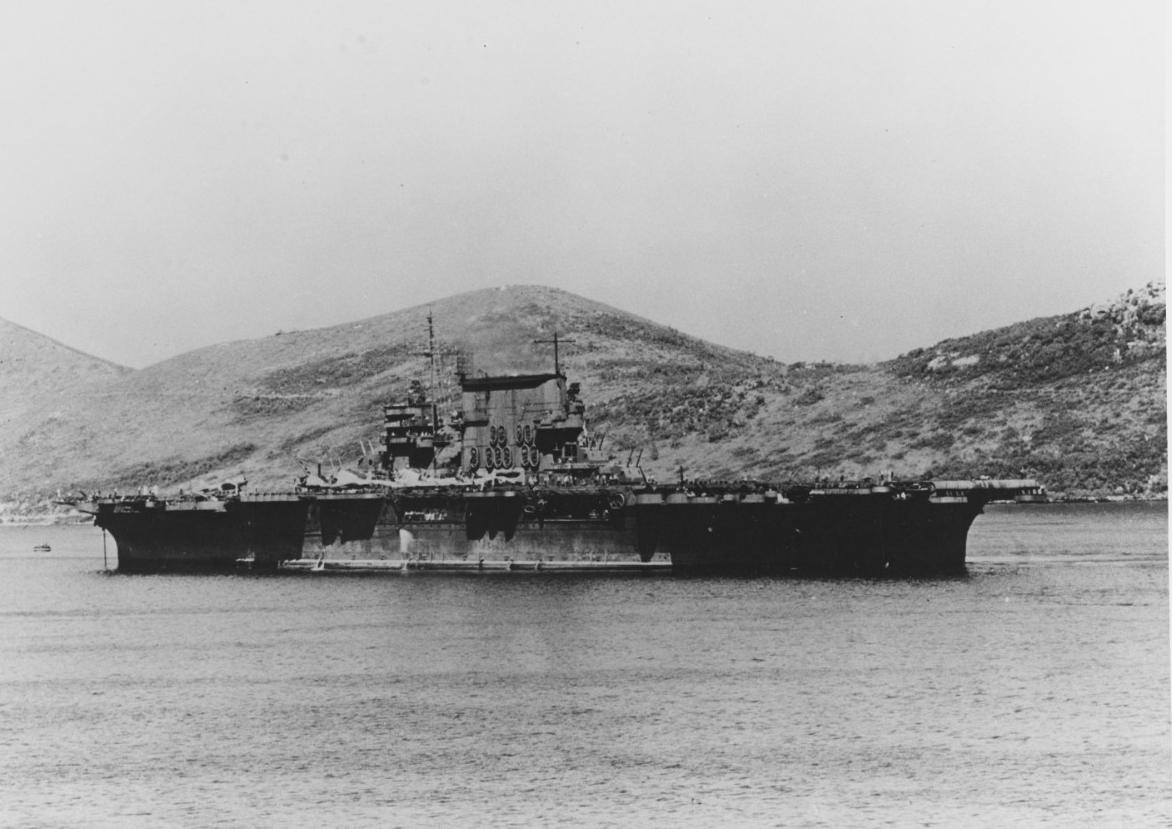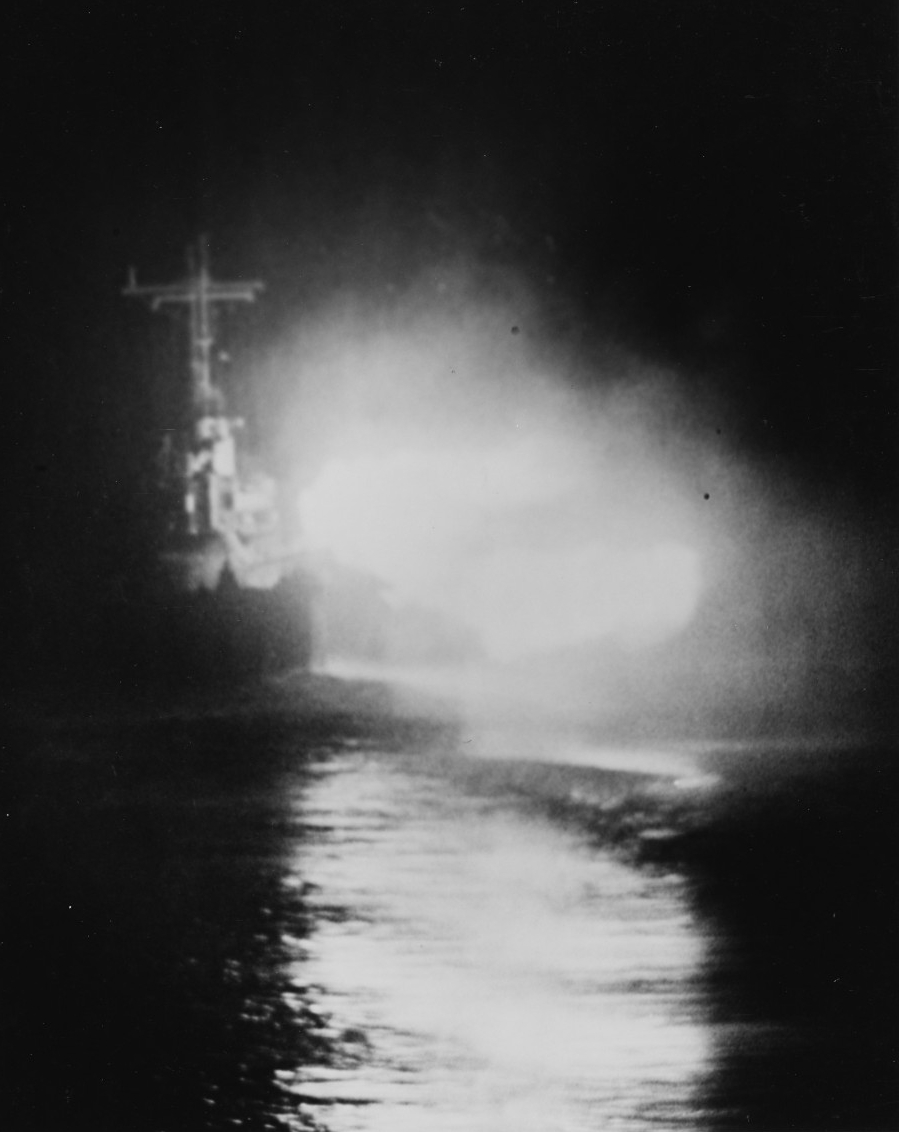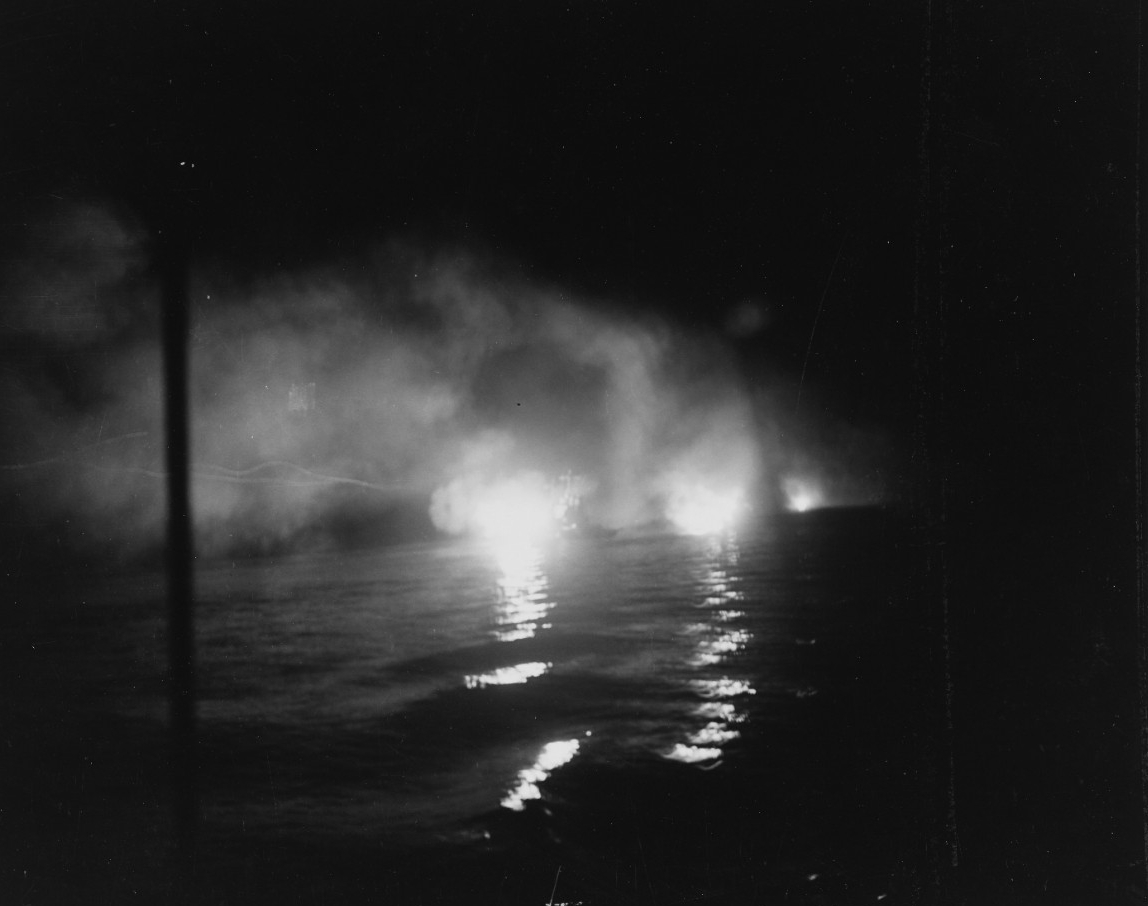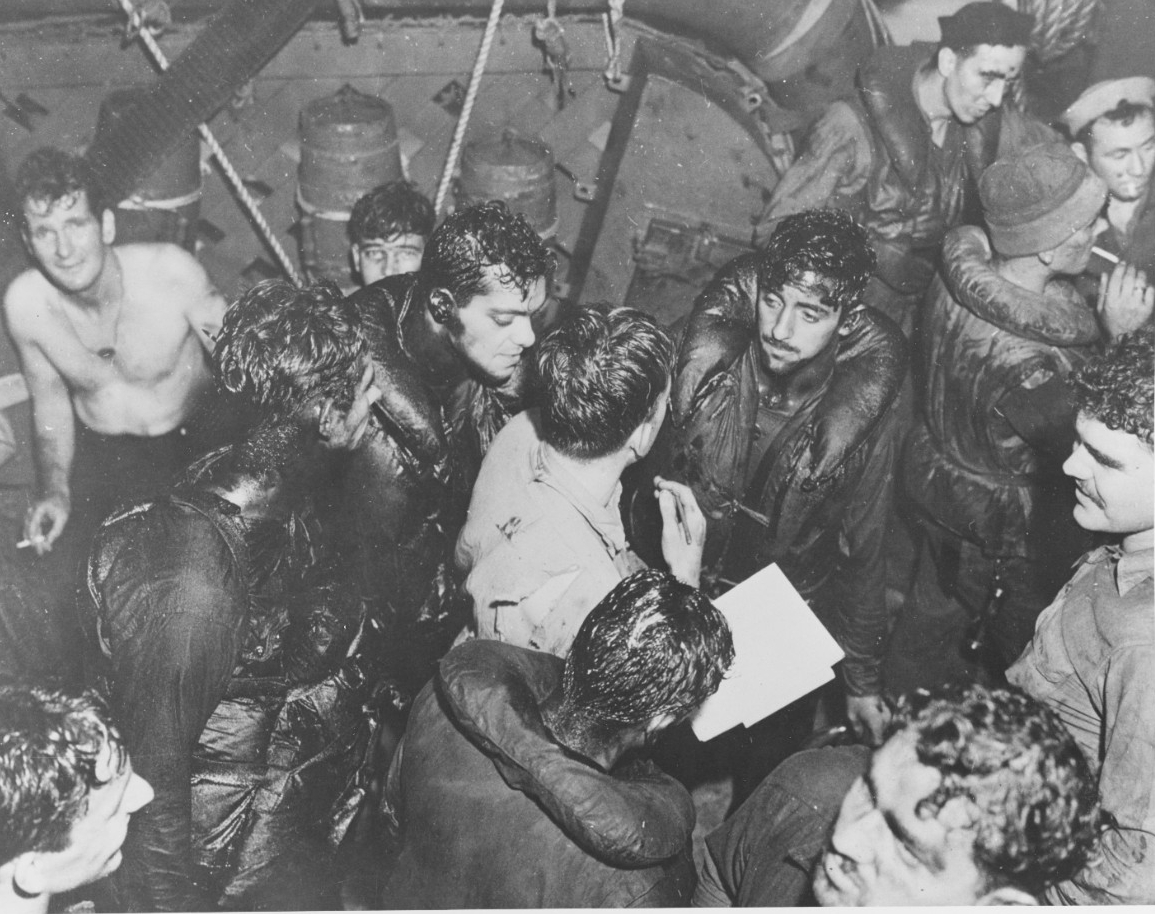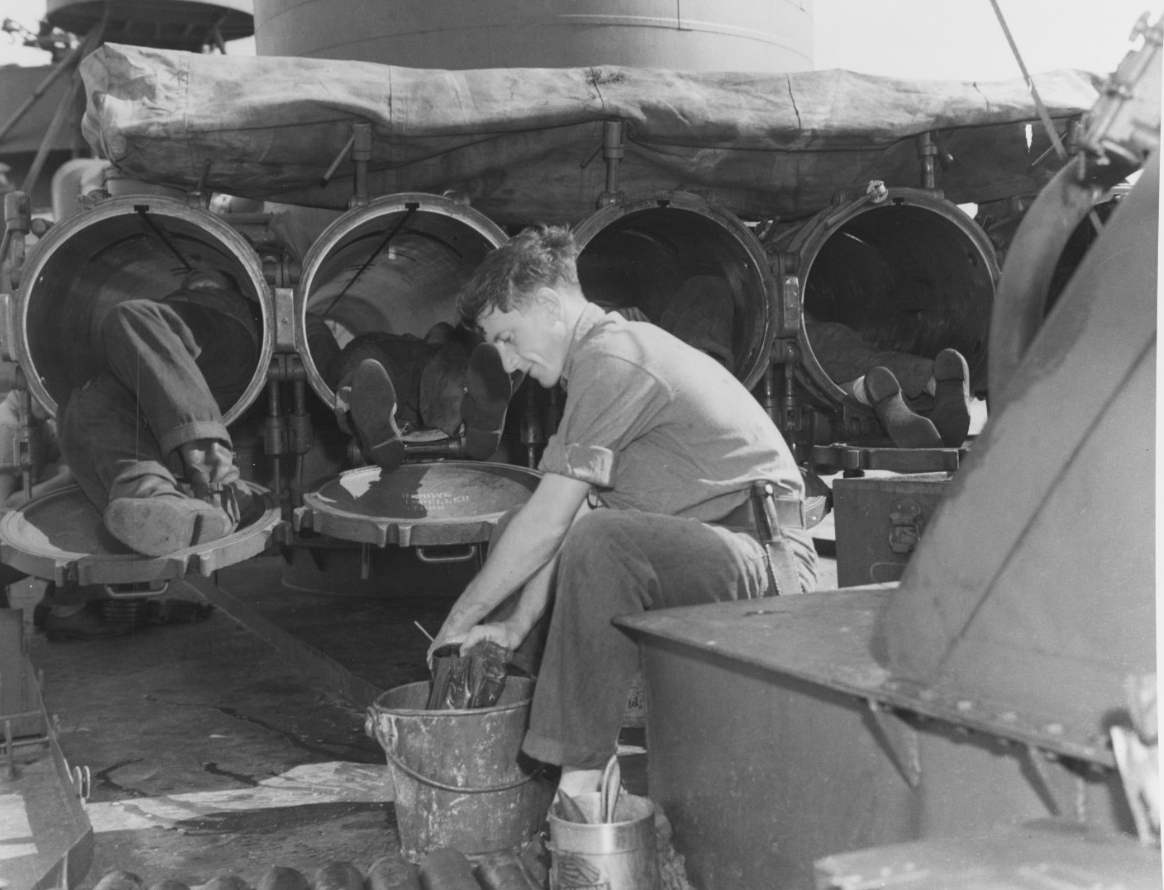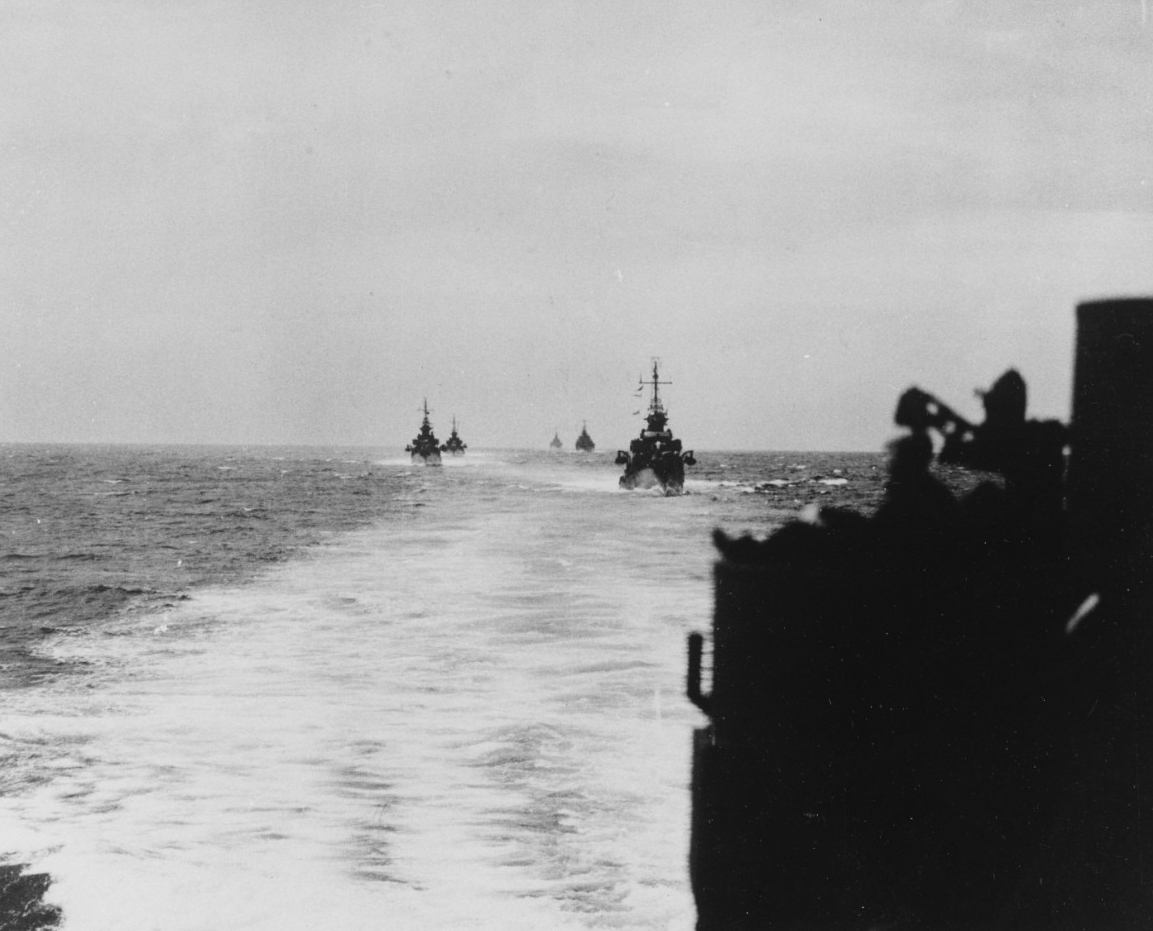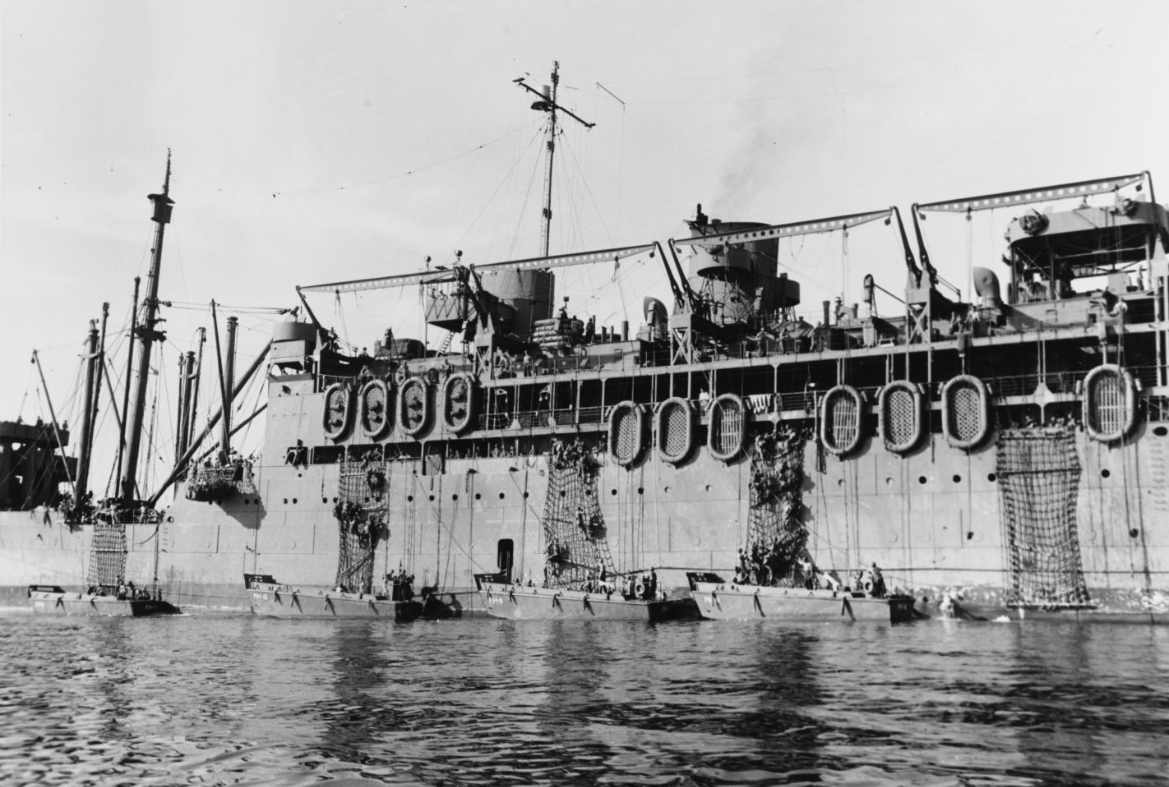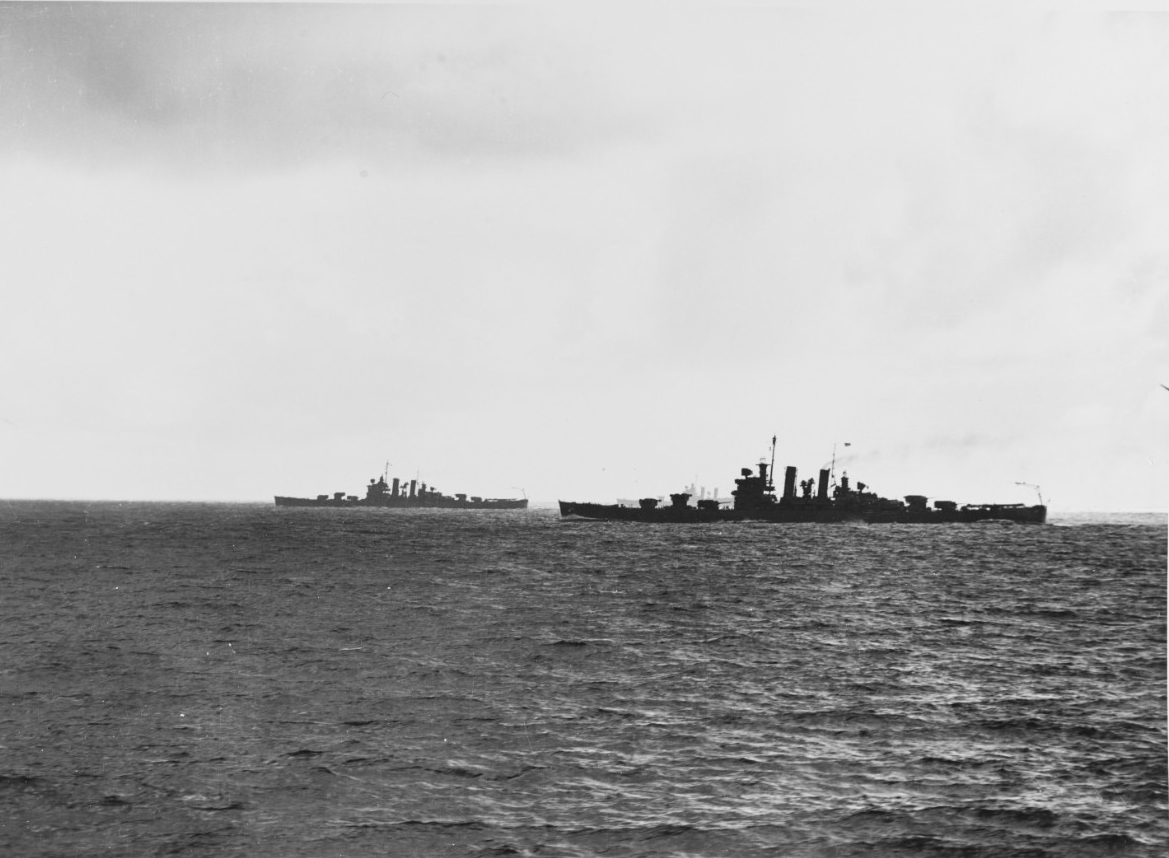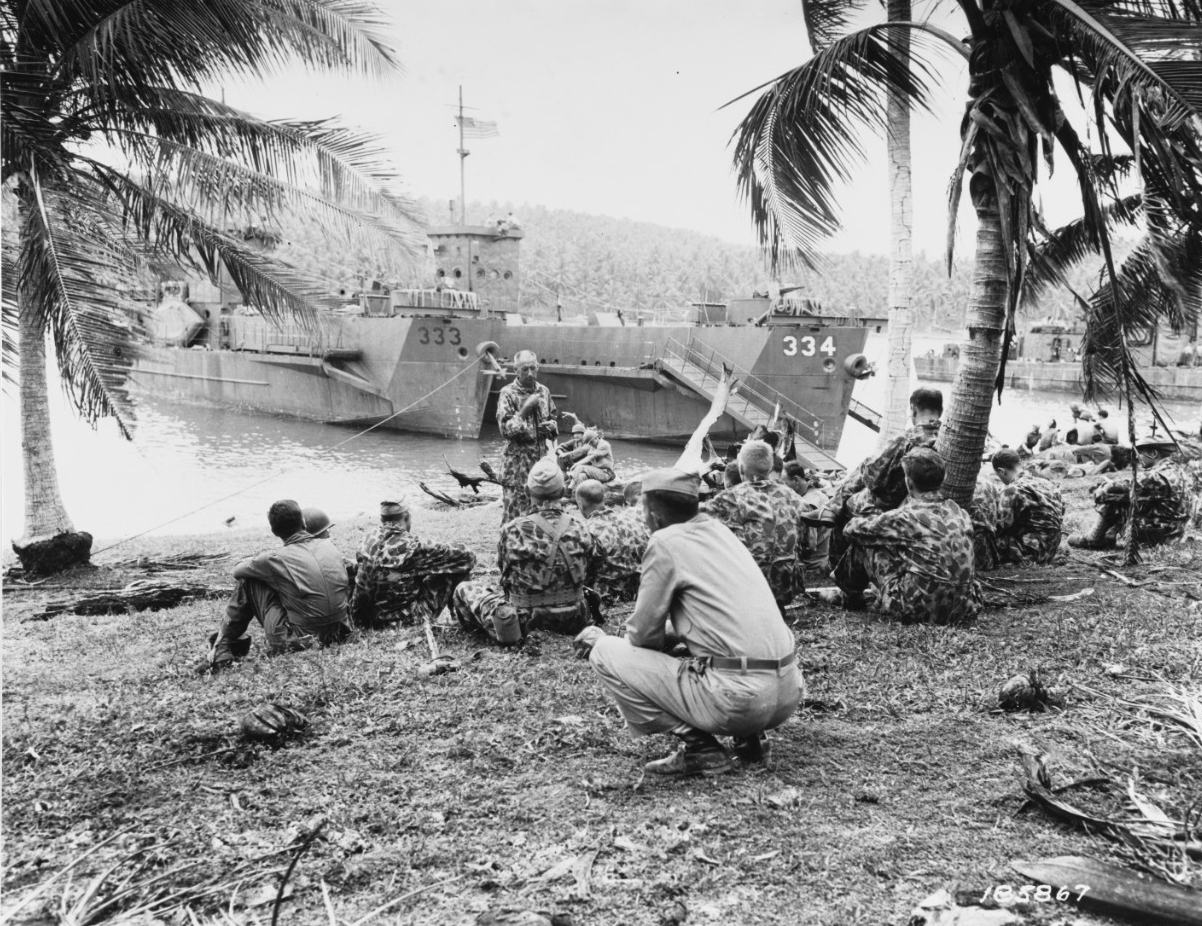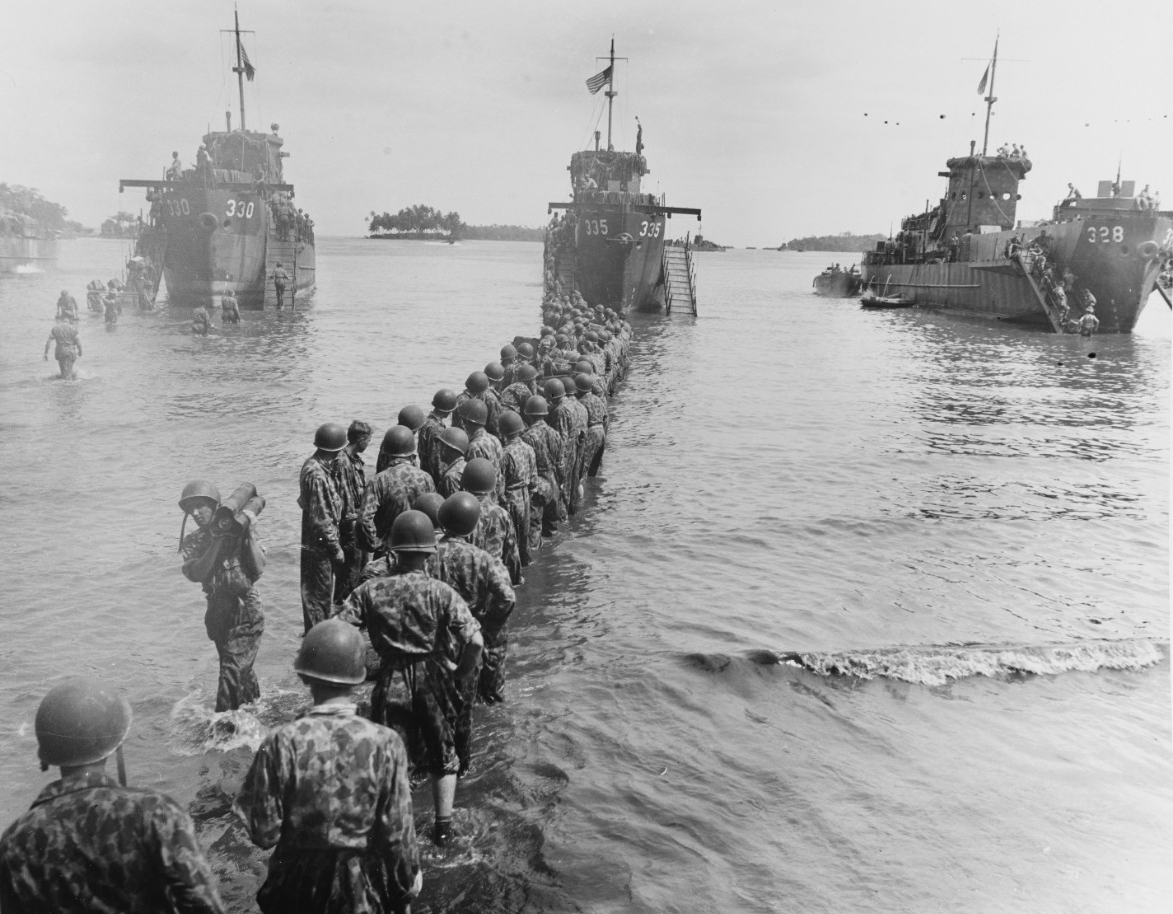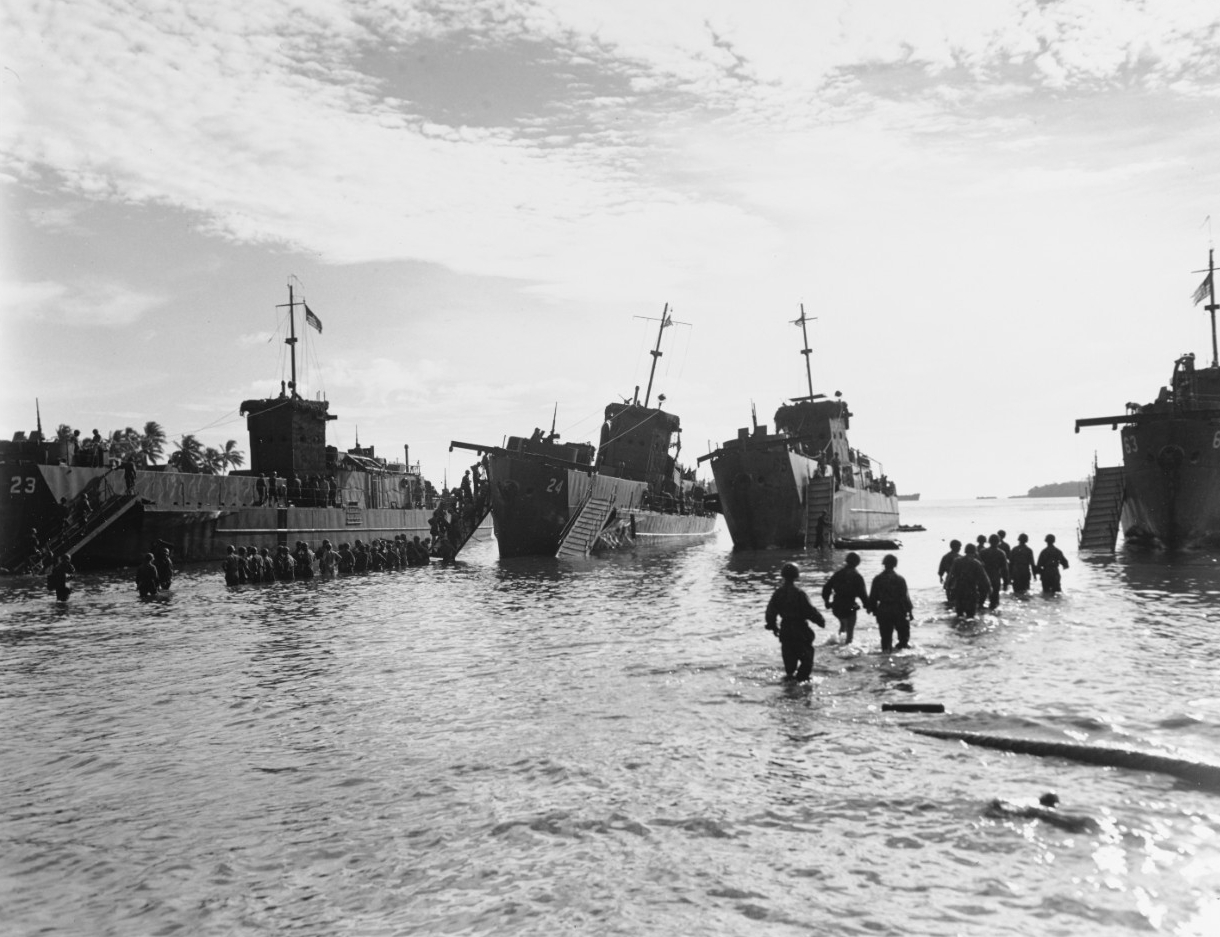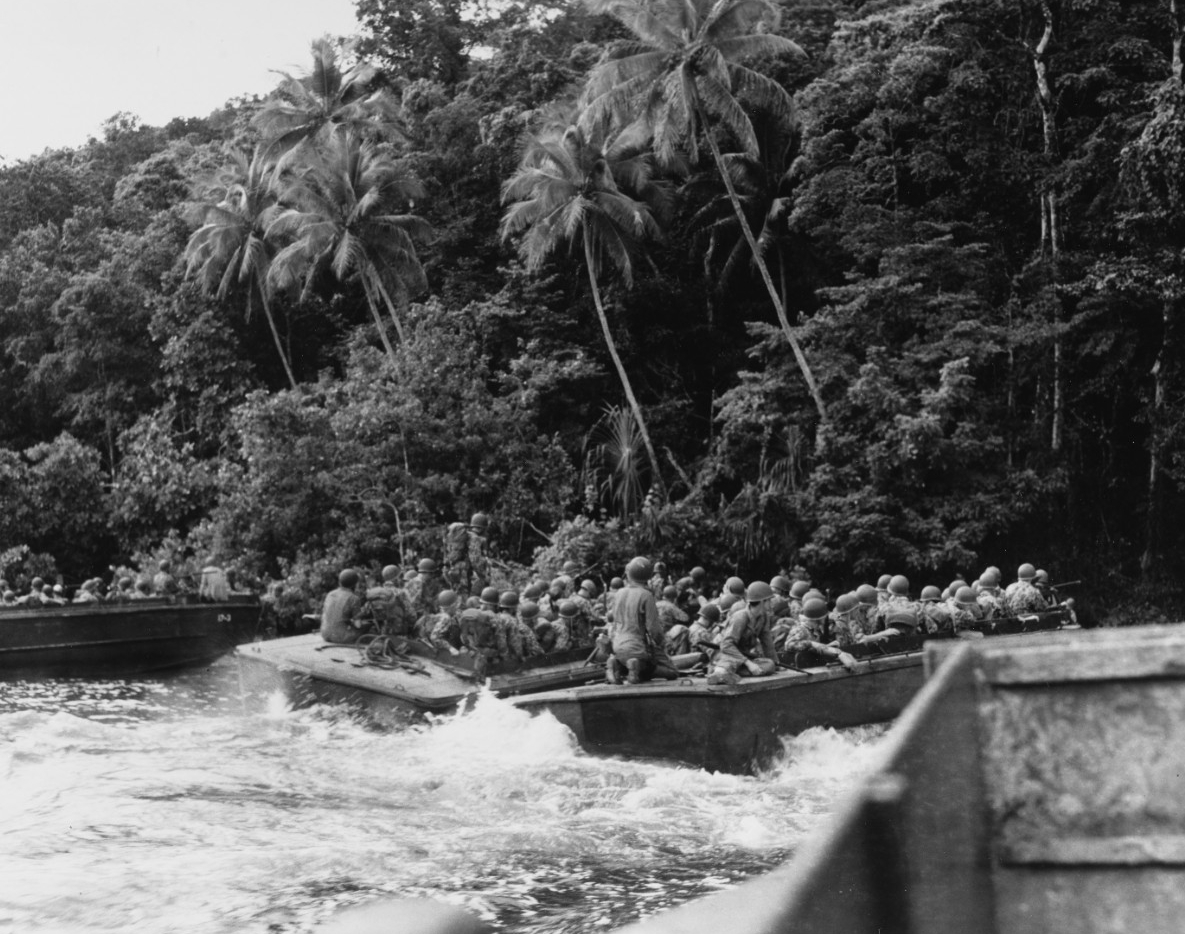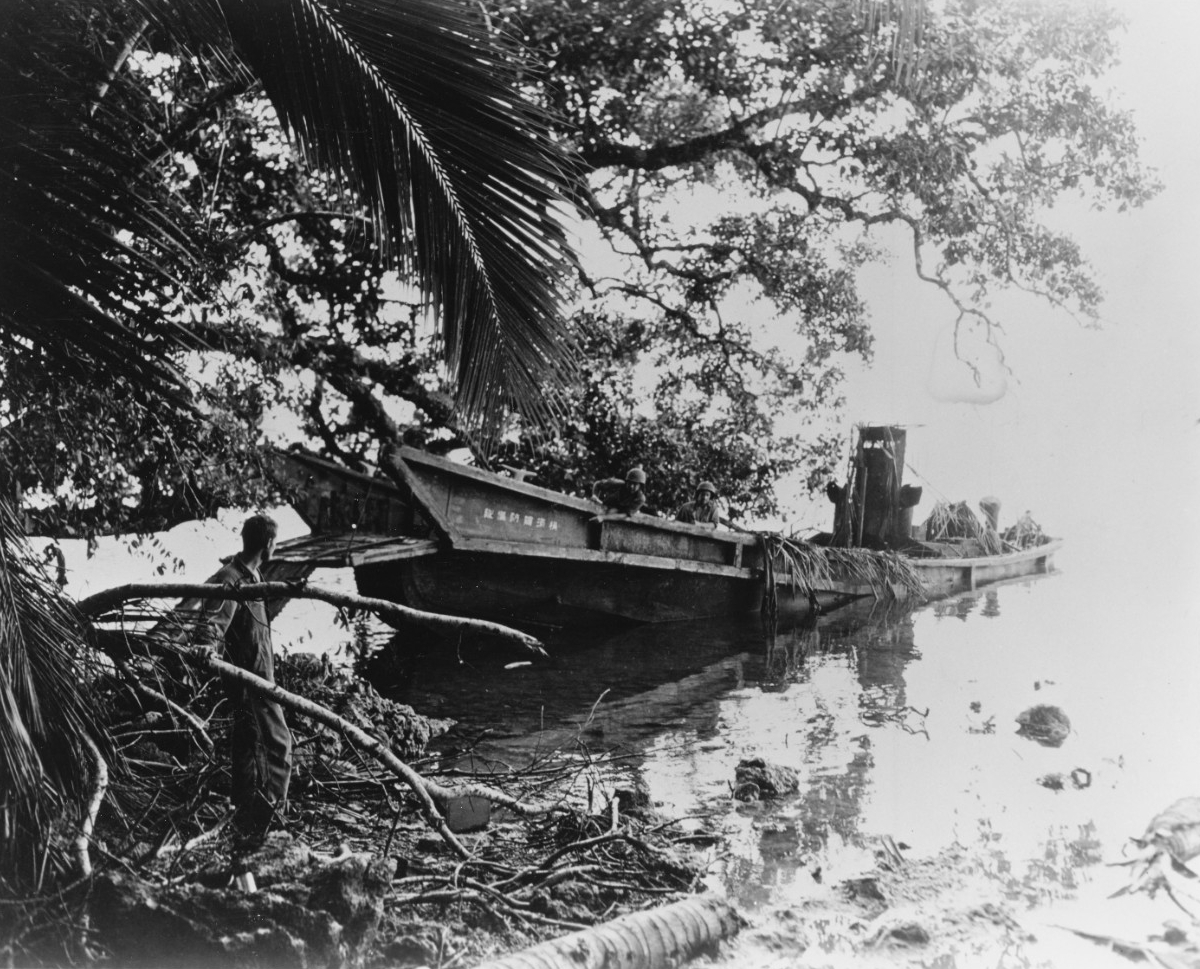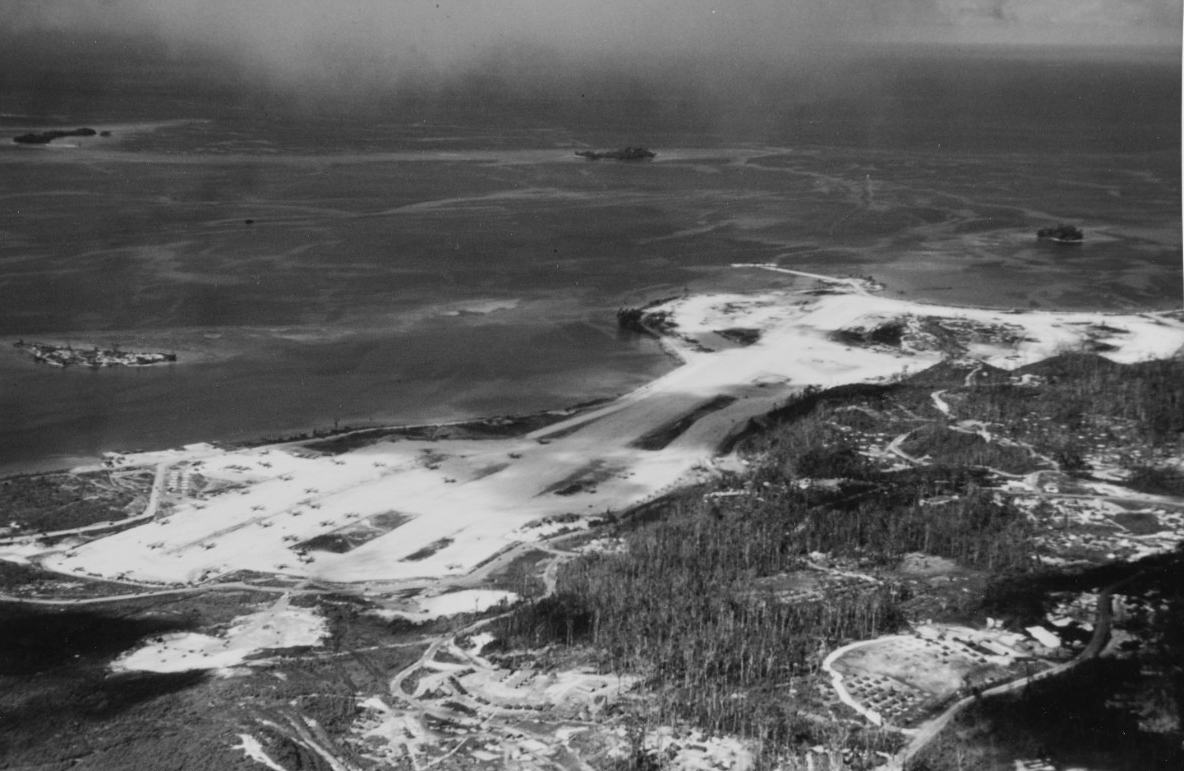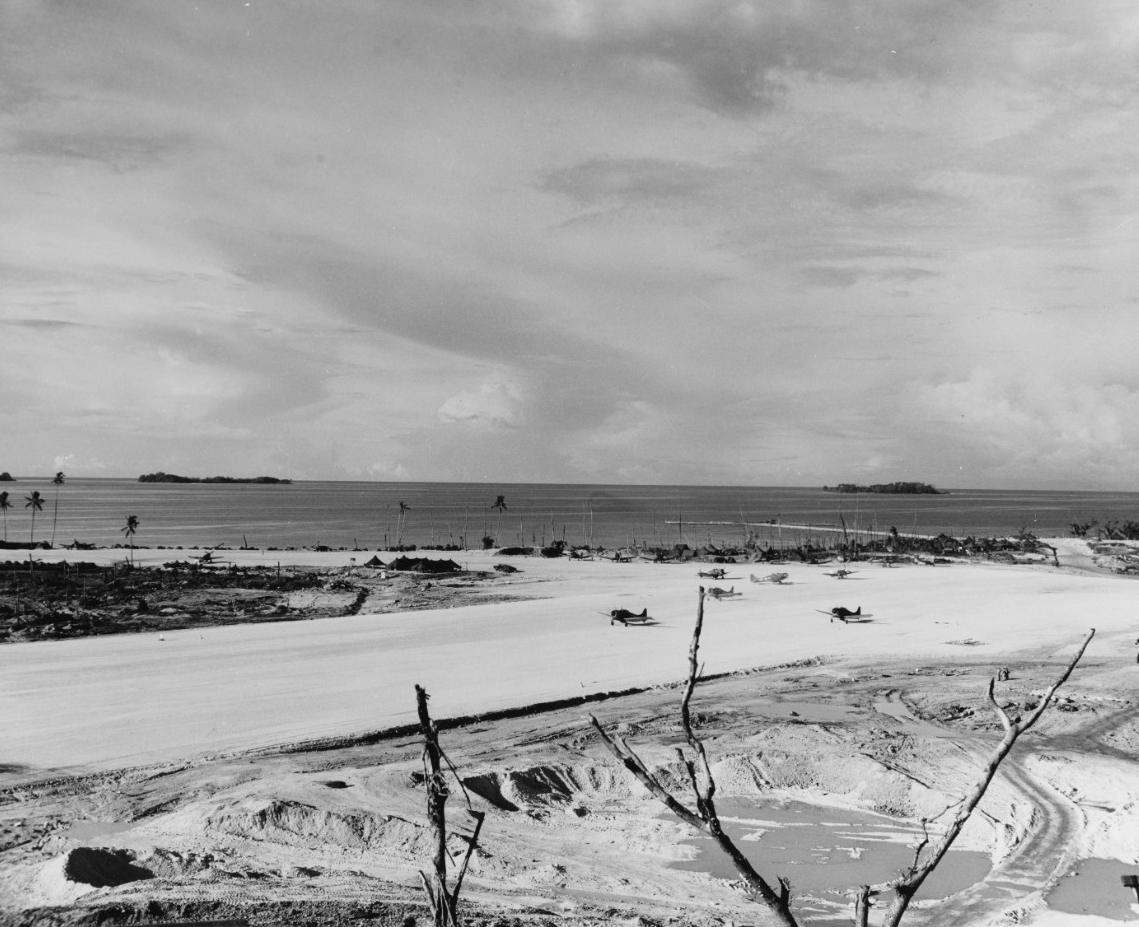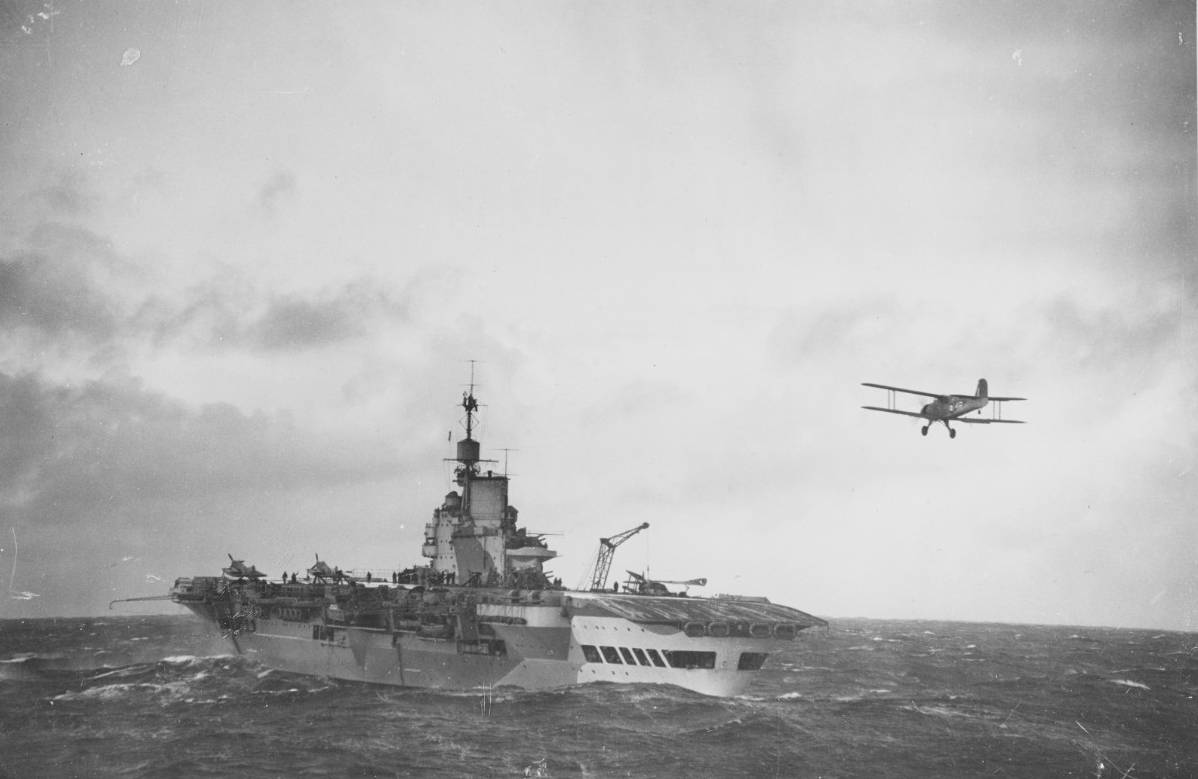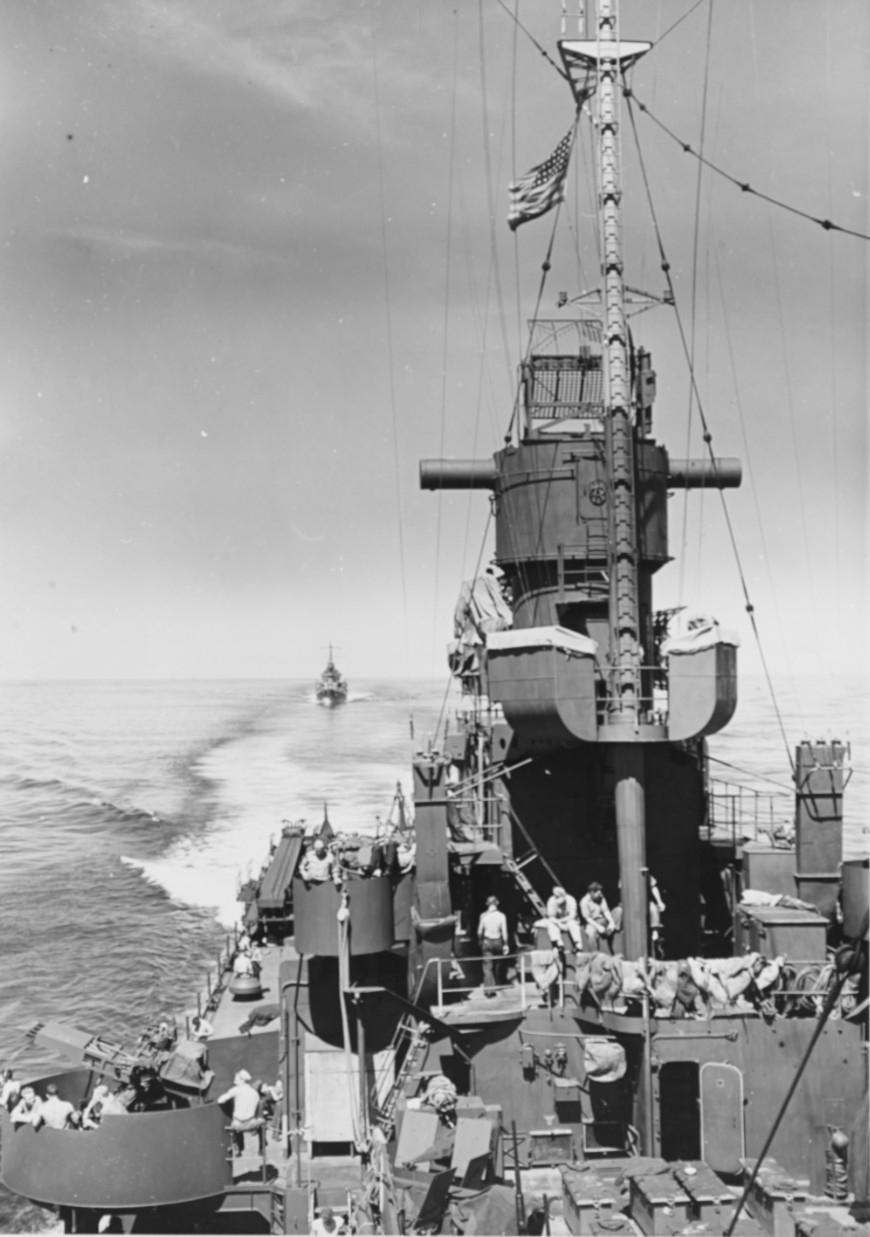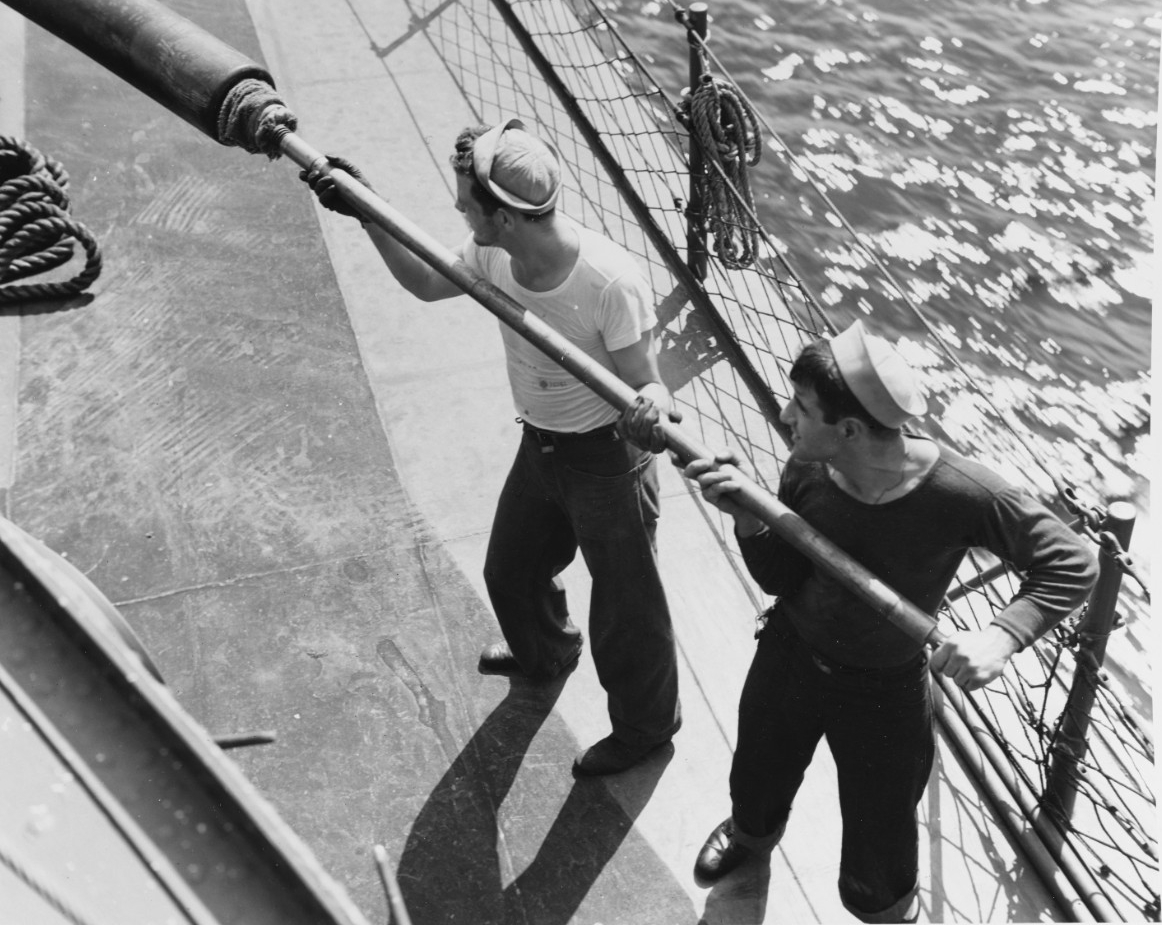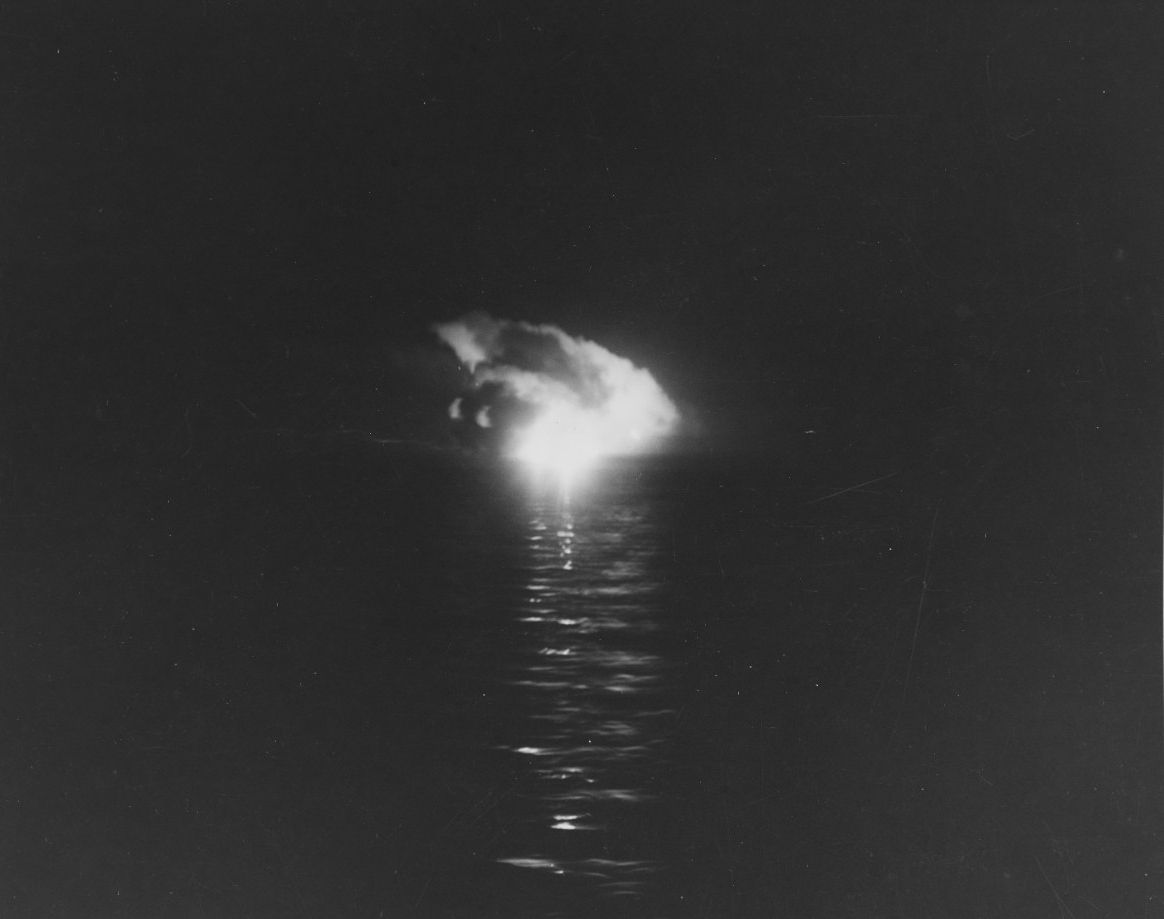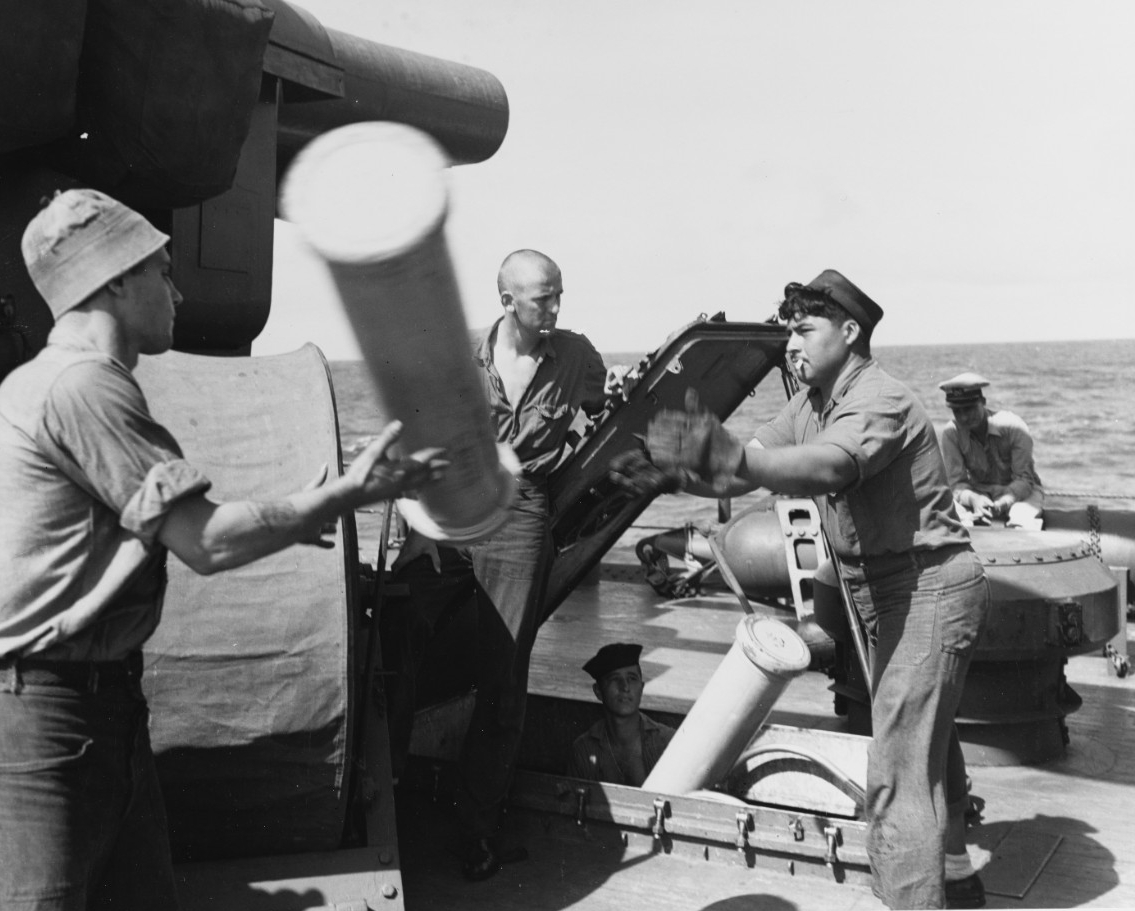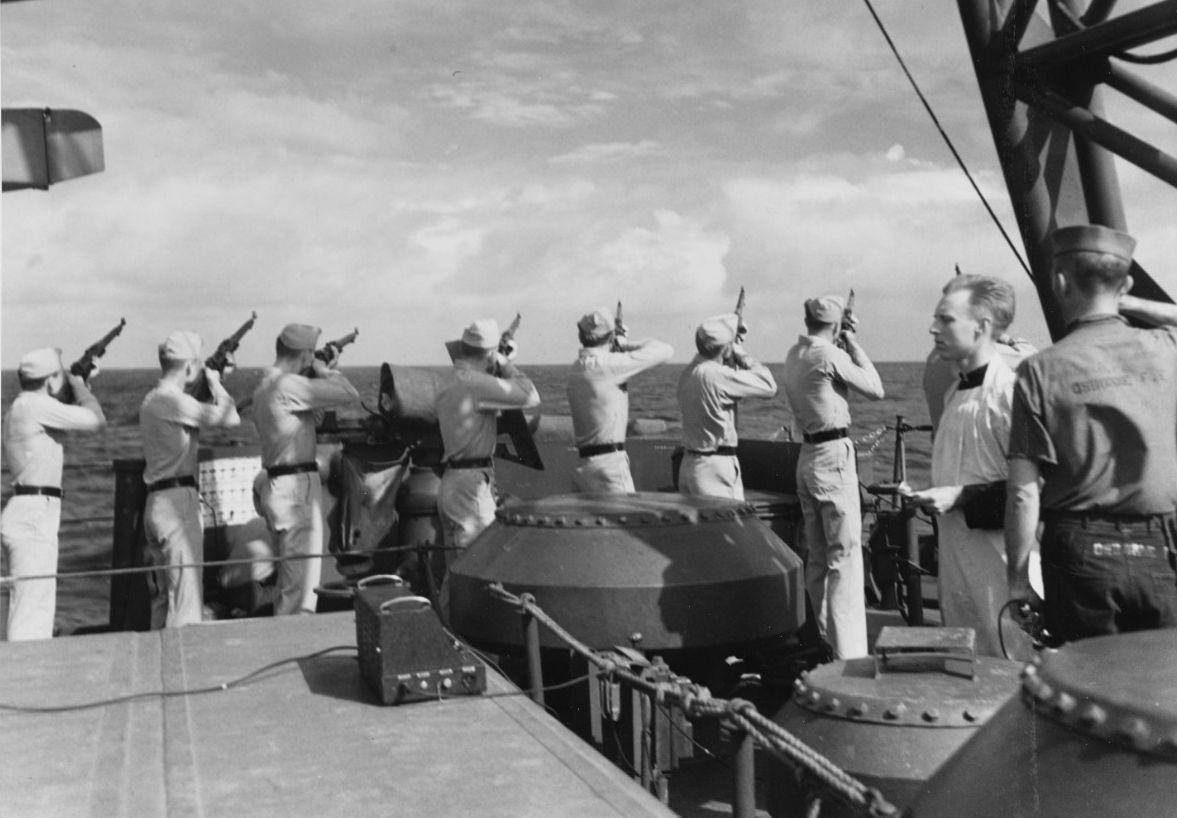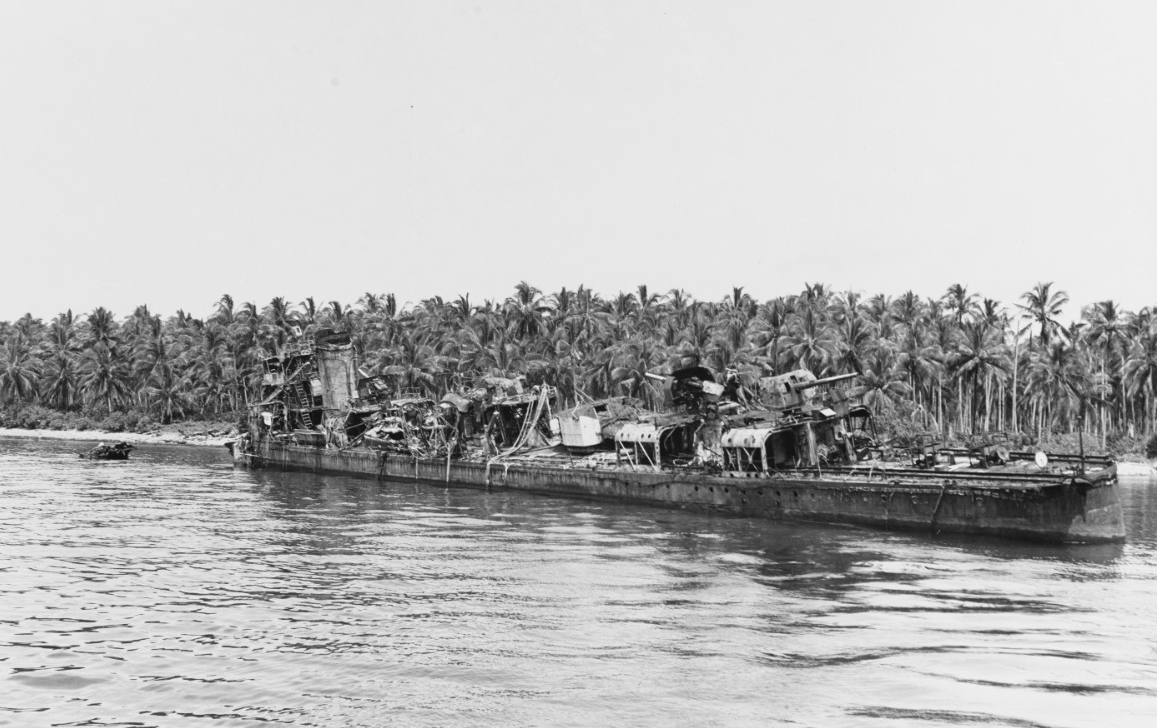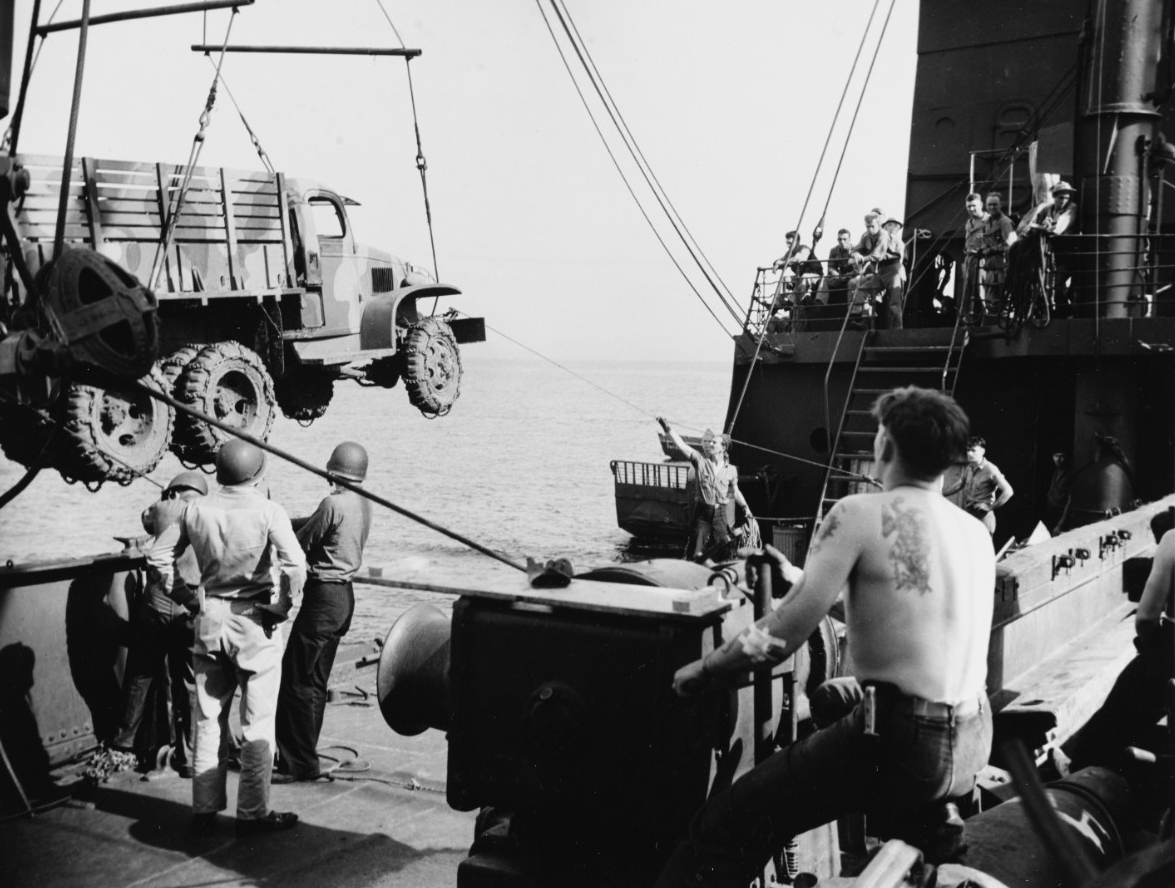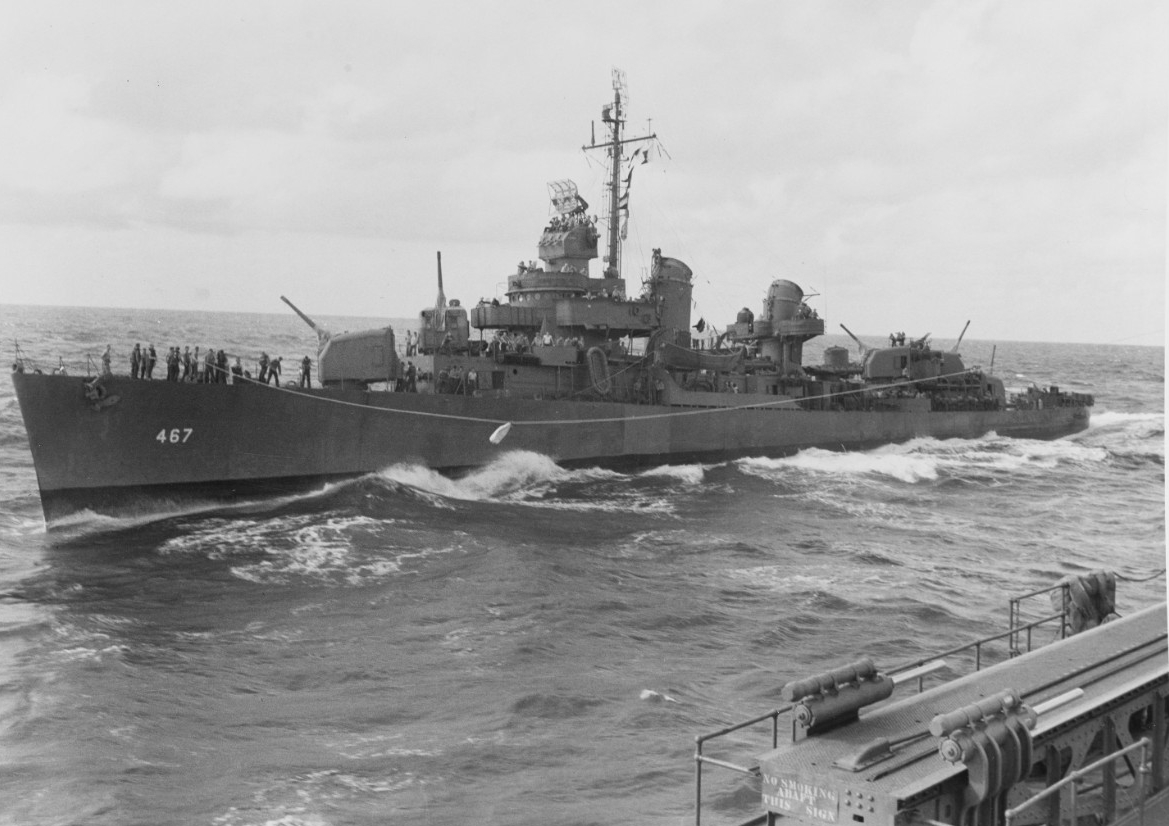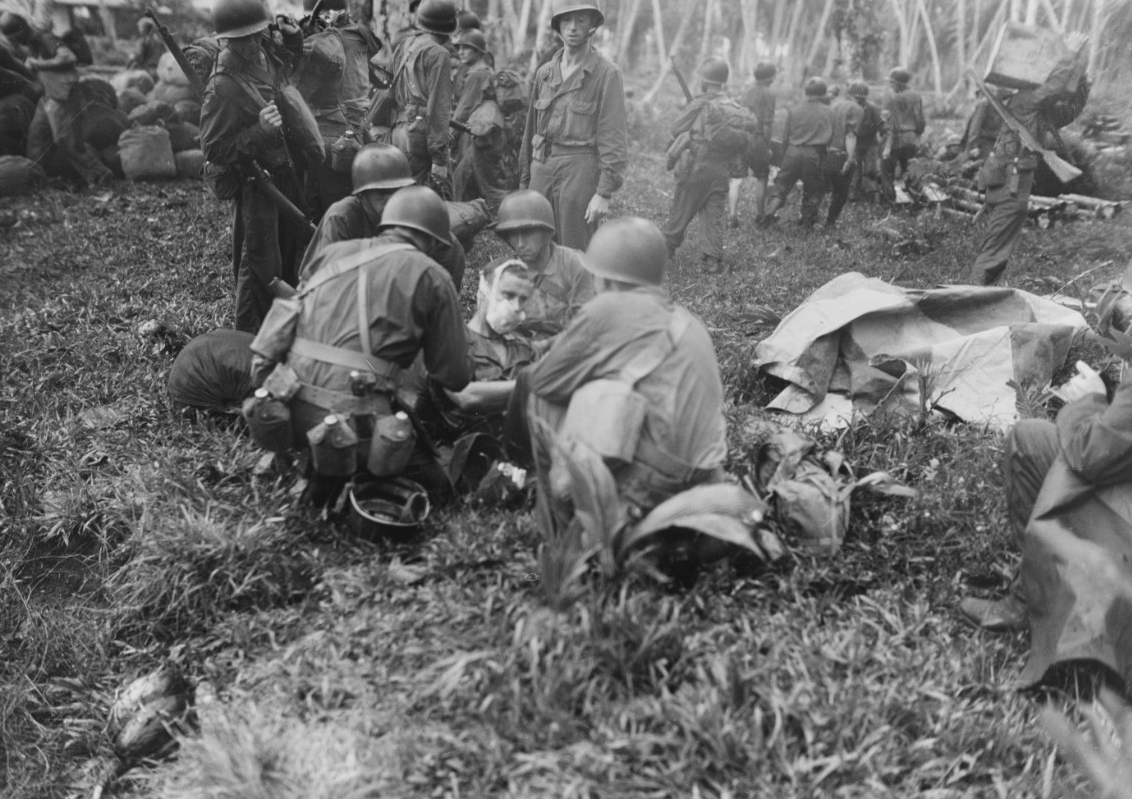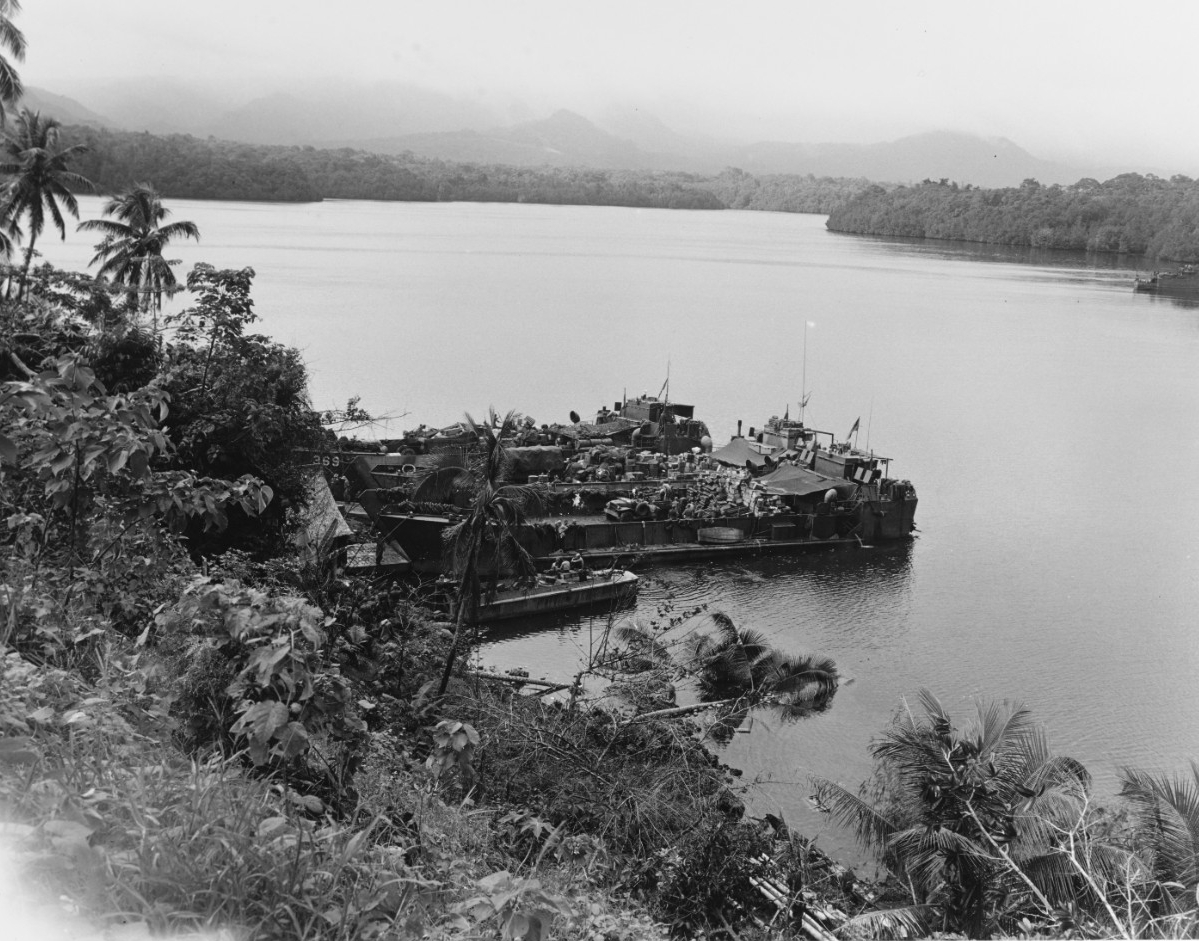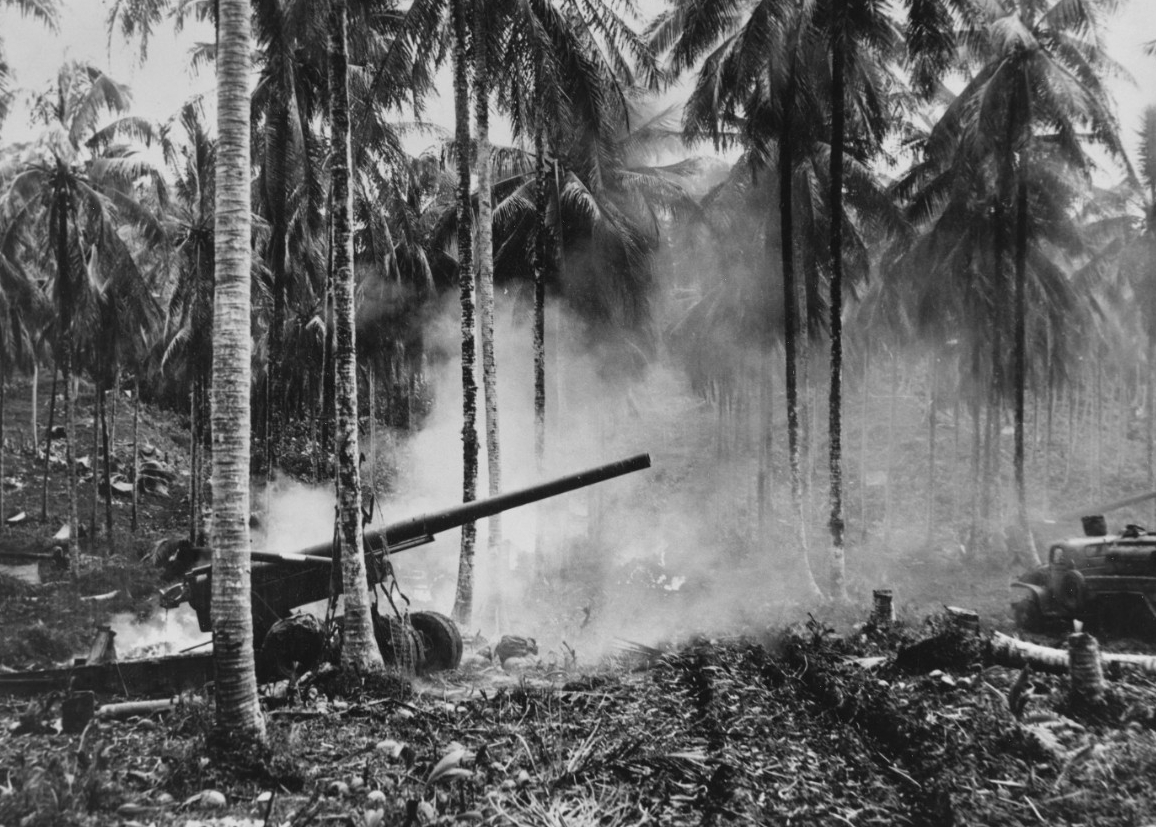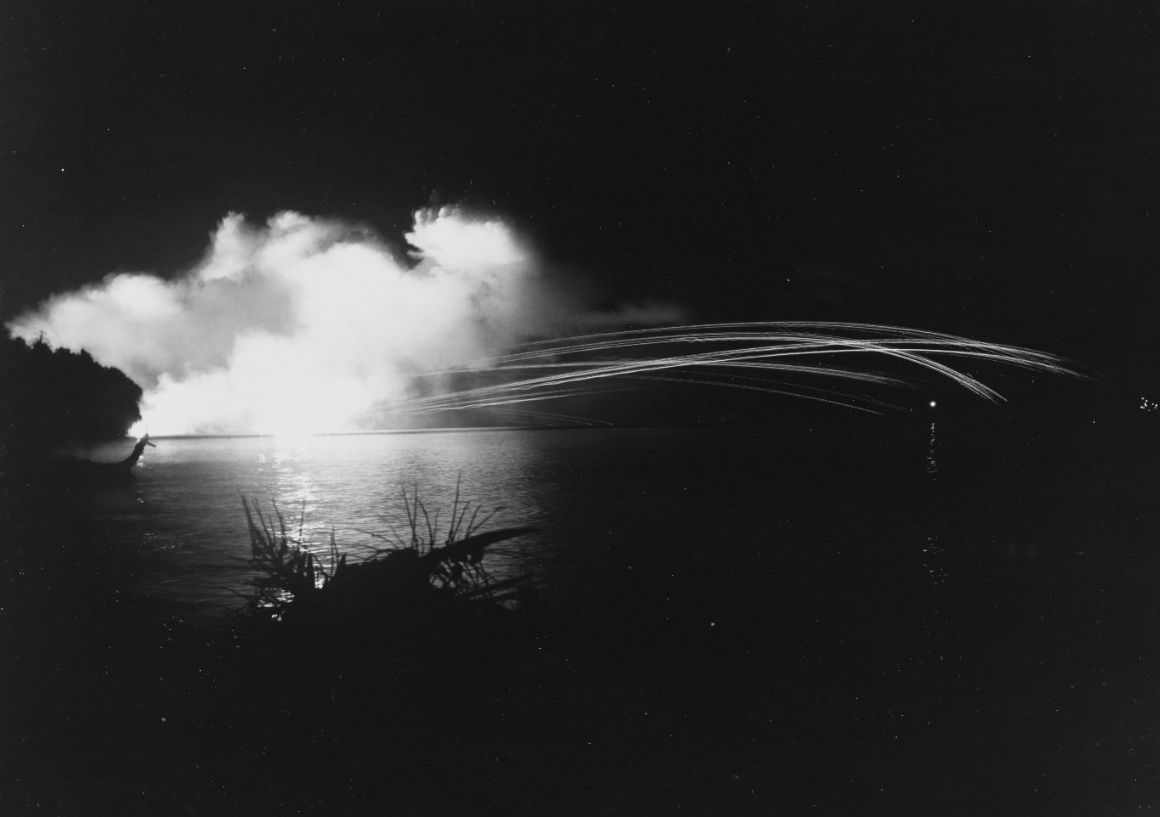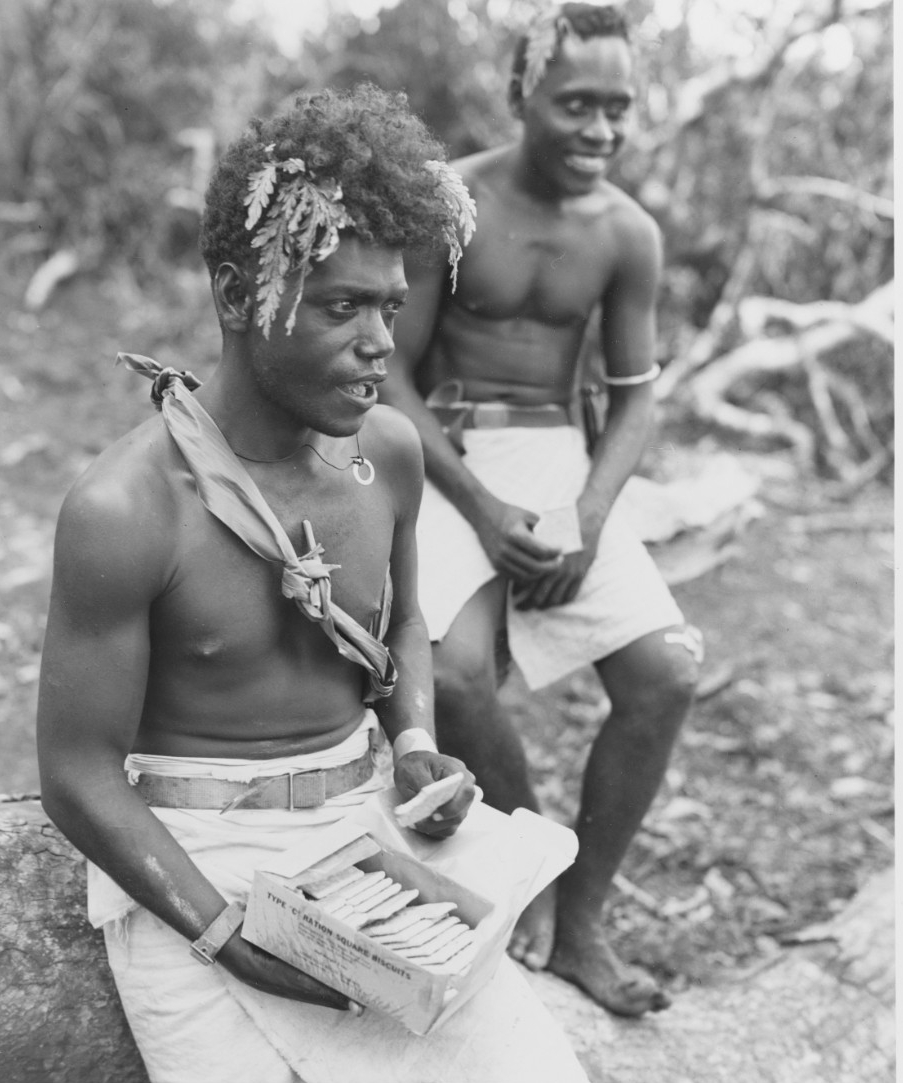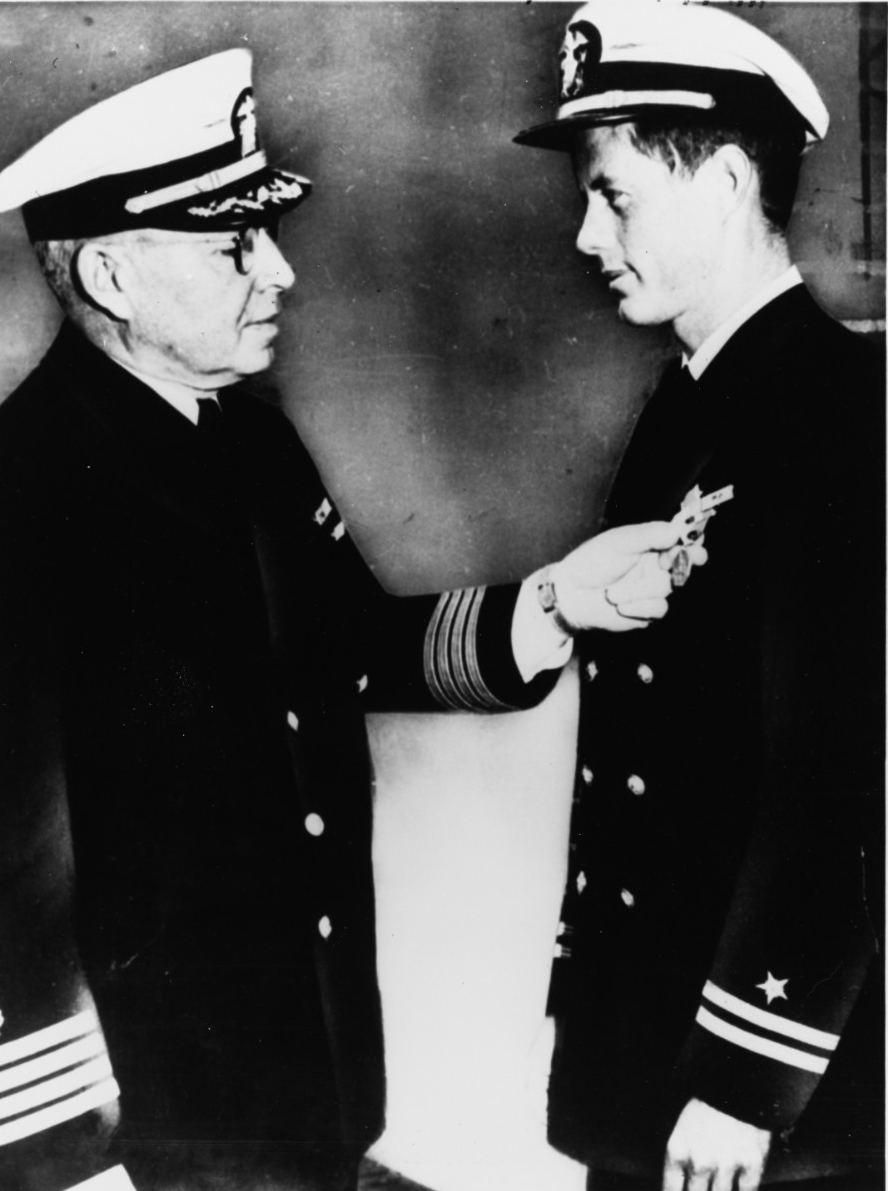Operations in the Central and Northern Solomons
March–December 1943
Saratoga (CV-3) in a South Pacific anchorage, likely Noumea/New Caledonia, 1943. Saratoga was the only operational U.S. fleet carrier available for the August 1943 New Georgia operation, so the Royal Navy's carrier Victorious (see following image) was briefly transferred to U.S. operational control (NH 81067).
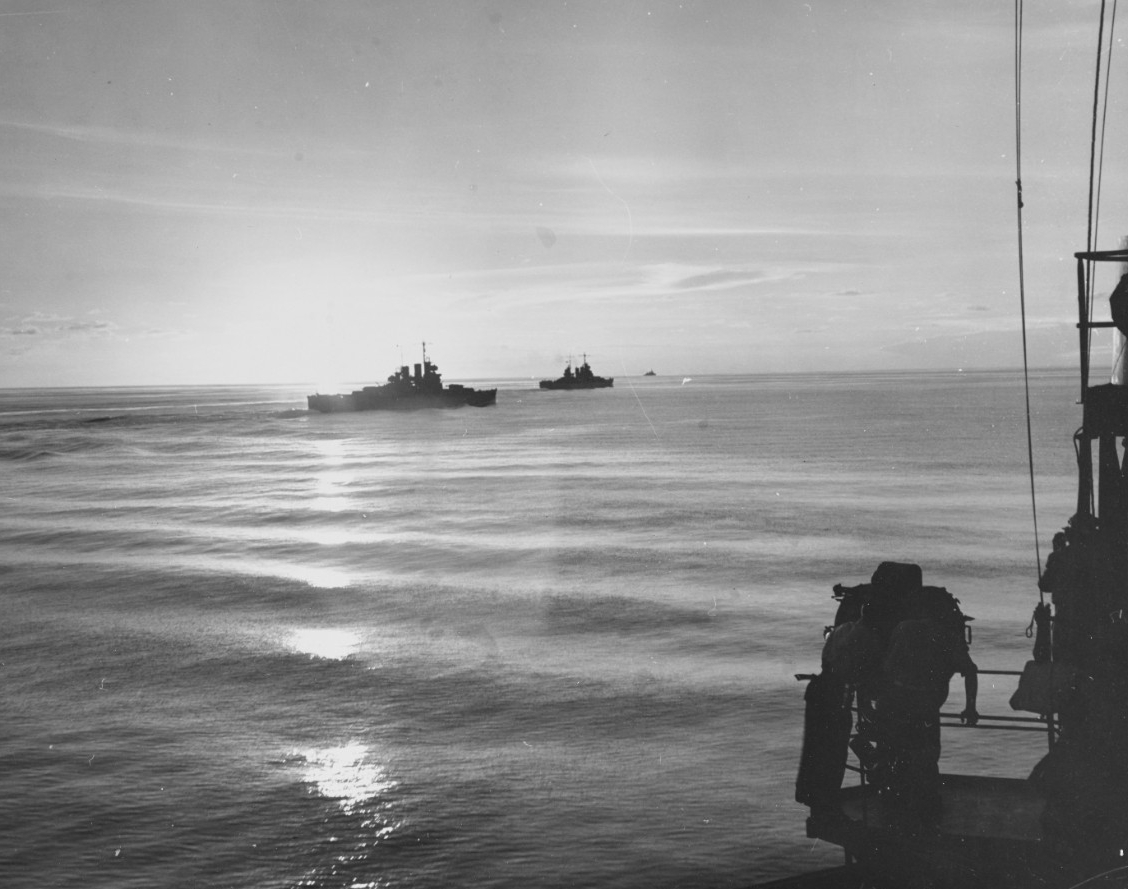
Two light cruisers steam into the sunset during the Kolombangara–New Georgia bombardment, 11–13 May 1943. Photo taken from Nashville (CL-43) (80-G-51656).
Rendova–New Georgia Operation, June/July 1943: Lieutenant Colonel Lester E. Brown, commanding 2nd Battalion, 103rd Infantry Regiment , gives last-minute instructions to his officers before boarding landing craft in the Russell Islands for transportation to Rendova or New Georgia, 29 June 1943. In background are LCI-333 and LCI-334 (SC-185867).
HMS Victorious with a Fairey Albacore torpedo bomber lined up to land on board, circa 1941. Before arriving in the Solomons in 1943, the carrier was fitted with additional antiaircraft guns, U.S. Navy radar and communications gear, and additional arresting wires in Norfolk, Virginia, and at Pearl Harbor. Her disruptive camouflage was only partially retained on her armored flight deck. It was found that the large TBM Avenger torpedo bombers taxed the ship's storage and deck-handling capacity. Thus, given her superior fighter-direction center, Victorious embarked the fighter squadrons of Saratoga's air wing in addition to her own during the New Georgia operation (NH 73690).
Lieutenant John F. Kennedy, USNR, receives the Navy and Marine Corps Medal from Captain Frederick L. Conklin, MC, USN, commanding officer of Chelsea Naval Hospital, Massachusetts, 1945. Kennedy was commander of PT-109, which was sliced in two by the Japanese destroyer Amagiri during the final operations in the New Georgia campaign, 2 August 1943 (NH 91542).
Published: Fri May 10 11:34:41 EDT 2019

